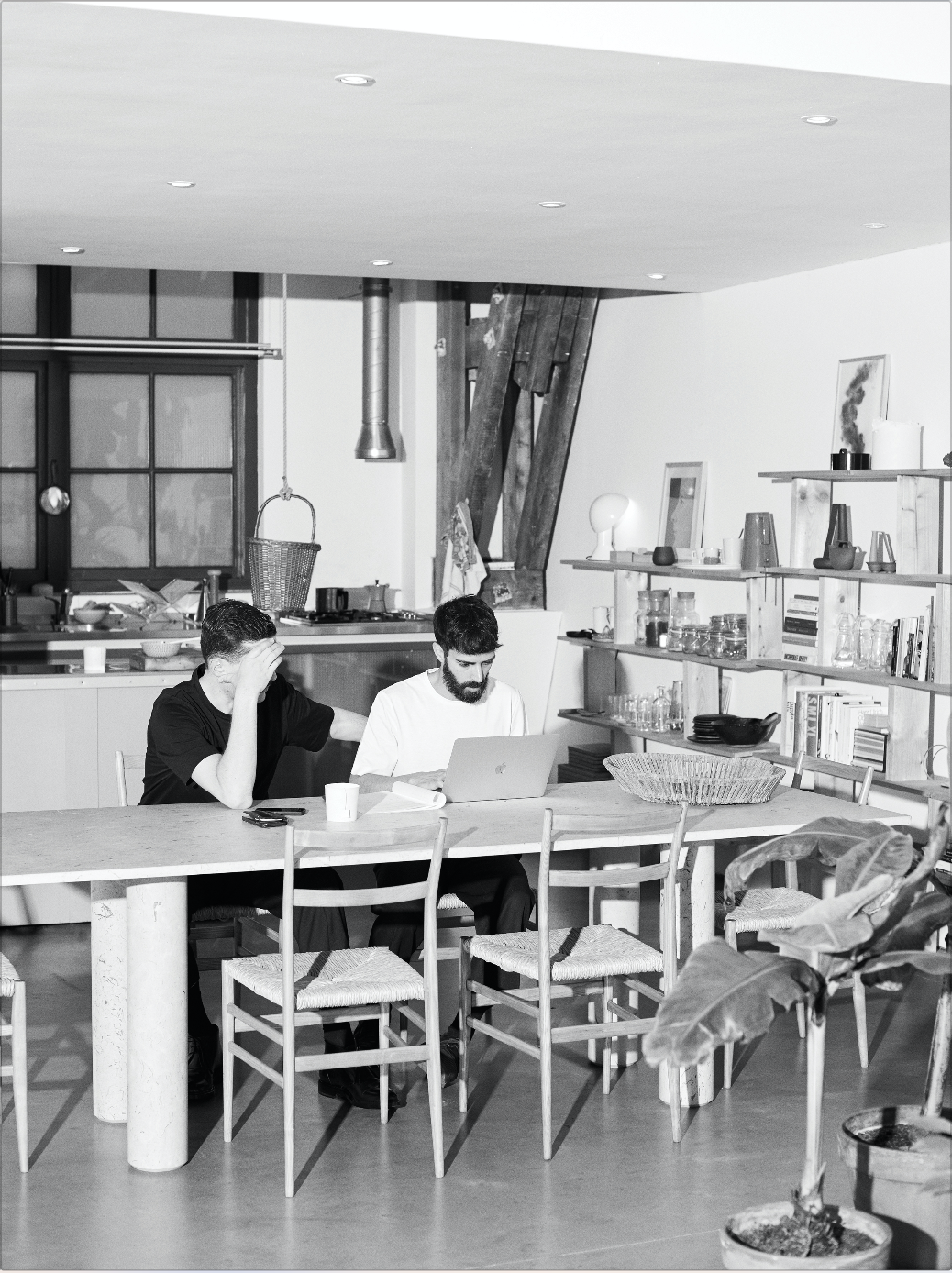
Having celebrated 10 years since their debut, Formafantasma participates at the 1st MDFF Greece—Athens.
The design duo looks back constructively while projecting onto what lies ahead: From defining and envisioning future design landscapes, to allying with science and nature and working towards a gradual but significant ecological, social and cultural systemic change, to introducing the necessary dose of radicalness in the educative sphere. With a heightened sense of self-awareness and applied self-criticism, Farresin and Trimarchi explore the degree of responsibility, power, and challenges entailed in their role as designers.
Interview / Curation by Annie Markitanis
.
.
.
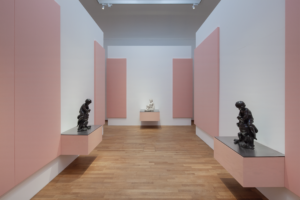
Formafantasma, Caravaggio-Bernini, Rijksmuseum, Room 6, Scherzo, 2020, Photo ©Eddo Hartmann
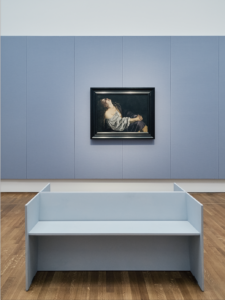
Formafantasma, Caravaggio-Bernini, Rijksmuseum, Room 7, Visione, 2020, Photo ©Gregorio Gonella
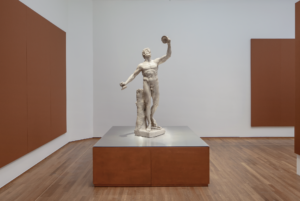
Formafantasma, Caravaggio-Bernini, Rijksmuseum, Room 4, 2020, Photo ©Eddo Hartmann
Annie Markitanis: If you were talking to someone who doesn’t know you, and had to describe Formafantasma as a person, which personality traits would it have, and how did they develop over the years?
Simone Farresin: When designers talk about themselves and their work, they are not often critical of the position they have in the world and the responsibilities involved. I would say that the main trait of Formafantasma is being self-critical, and probably over time this critical aspect matured, and became more of a sophisticated layer with a particular interest in the ecological education of design.
Andrea Trimarchi: At the beginning our way of working and researching was much more intuitive, whereas in the last few years we developed more of a methodology. So I think that during these past ten years we have learned to structure our work and the way we think and communicate with our public. Certainly, all the ecological and social issues related to design are simply our core focus.
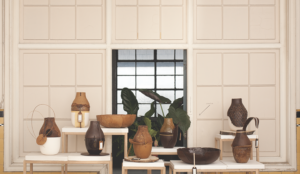
Botanica, view of the collection, Formafantasma, 2011, Photo ©Luisa Zanzani
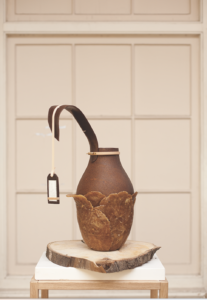
Botanica I, Formafantasma, 2011, Photo ©Luisa Zanzani
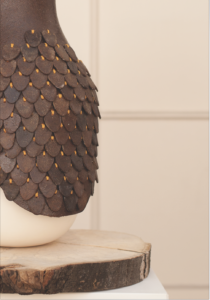
Formafantasma, Botanica III, detail, 2011, Photo ©Luisa Zanzani
AM: Have there been certain experiences, and challenges in the way that you have perhaps been perceived, that have shaped, motivated and propelled this maturation you describe?
SF: There have been several people who formed our practice, but some specific commissions and works definitely helped us grow. Our most recent growth experiences have been, I would say, taking part in the XXII Milan Triennale with Broken Nature: Design Takes on Human Survival, and the exhibition curated by Paola Antonelli. Before that, the commission from the National Gallery of Victoria in Melbourne, for which we developed Ore Streams, which was also included in the Broken Nature exhibition. The experience of working with the Serpentine for Cambio, and our conversations with the curatorial team, shaped our practice even more.
AT: I’d add that we probably give our best when working in partnership with an institution. The most seminal work within our graduation show portfolio was born from our education at Design Academy Eindhoven. Then there was the collaboration with the Libby Sellers Gallery. Libby was a fantastic curator, formerly working for the Design Museum. She tried to bring curatorial thinking to the very commercial context of the gallery, while maintaining a mindset that is very free and very rooted in the soul of each designer. Another great partner was the Plart Foundation, where we created Botanica. And Botanica itself evolved into a more mature commission at the National Gallery of Victoria in Melbourne, which Simone mentioned, and at the Triennale with Broken Nature.
SF: I also think that teaching in different institutions, especially the Design Academy Eindhoven, had an impact on us. Inevitably, when you teach, you are more likely to question yourself, the nature of your work, what you stand for, and in which way your vision of design can inform other matters. You need to be responsible if you want to be a mentor.
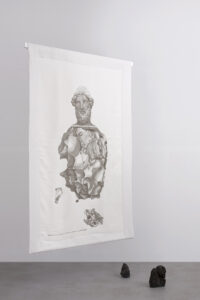
Formafantasma, De Natura Fossilium, Efesto, 2014
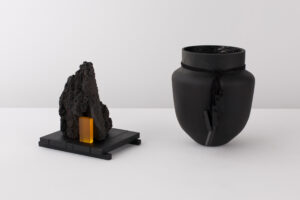
Formafantasma, De Natura Fossilium, Salina, 2014
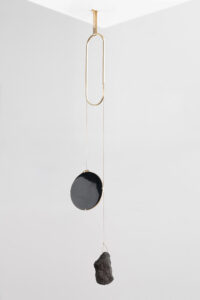
Fomafantasma, De Natura Fossilium, Iddu, Mirror, 2014
AM: As it attempts to shape induced human behaviours, your work carries a lot of responsibility, and prompts a discussion of the ecological, cultural and political duties of design. What can you tell me about the challenges involved in your philosophy and methodology?
SF: While there are challenges in doing that, we are interested in developing certain issues with a political and ecological awareness. Our perspective isn’t purely academic, because, as a studio, we are also business-driven. And in fact this poses the first challenge: how do we stay true to our more radical ethical beliefs while working on client projects that are at odds with such principles? To what extent do we compromise?
AT: That’s an interesting dilemma for us. Of course, we could shift to entirely non-commercial work. But I think that this bridging between the commercial and the non-commercial is what’s really important to us.
SF: We try to combine the radical and the commercial, in the rare times when that’s possible. The future might bring more opportunities to amp up this integration, as commercial brands understand that they must change their ways, and ask designers to develop their work on multiple levels that are more realistic. On the other hand, at times we deal with that challenge by keeping the two separate: the education and the research-based projects on one side, and on the other, the commercial projects, where maybe we can insert certain ideas aligned with our attitude. Nevertheless, the latter aren’t as radical as our other projects. It may seem like a limitation, but we hope that it will become a strength in the future, when people will have a better grasp of our work. Then they won’t come for the hype, or with a merely superficial understanding. I hope they’ll come to us with more precise and intelligent questions, more radical ideas, as well as engagement. Right now, too many people think of creativity purely as an act of self expression. When clients tell me: “Express yourself”, I always think: “I can express myself very well when I’m in a room on my own.” If I only wanted to express myself, I’d be a musician. But I chose to be a designer.
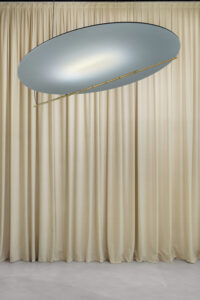
Formafantasma, Spazio Krizia, Salone del Mobile 2017, Photo ©Masiar Pasquali
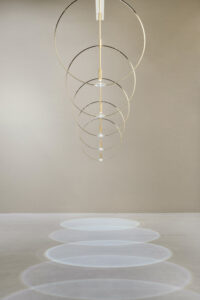
Formafantasma, Spazio Krizia, Salone del Mobile 2017, Photo ©Masiar Pasquali
Formafantasma, Lenti Biconvesse, Detail, 2017, Photo ©Masiar Pasquali
AM: Through every single project, you raise and question awareness in its many forms. Self awareness, exemplified in your choice of, and approach to concepts, and how they resonate with one other. Awareness of a material’s history, impact, expressions. And, on a broader scale, you encourage the development of collective awareness. How important is it for Design to urge the audience to go deeper, to seek or embrace a certain knowledge? How can your commercial presence accommodate such a mission?
AT: Usually, when we receive requests from clients, we try to educate them, and at the same time they educate us. When we get a commission, we try to challenge it. Every time a company approaches us, there are initial questions from our side about how and where they produce, the ethical implications, the ethical decision-making that defines the company. So if clients don’t come to us with the right questions, we try to stimulate the right brief. Or the brief that is right for us, at least.
SF: Initially many brands find it hard to work with us, and it’s not easy for us to work with them either. We receive a lot of requests, and often they go nowhere. It’s strange: potential clients often think that they really want what we do, but we don’t feel like they get it. Their questions and their engagement aren’t as they should be. So we try to simplify, but they aren’t happy about that. You need to have a constant dialogue while trying to get there, and it doesn’t always work. But we have faith that our way of working will become clearer and people will start to get what we do.
AT: After Cambio, the exhibition at the Serpentine, we endeavored to work with different media, and disseminate our communications on various levels: Instagram, the website, the exhibition catalogue. We try to use these media in a nonconventional way. At first, like most designers, we used Instagram as a platform to promote our work. We are still doing that, but with a much more informative approach, which we try to maintain throughout our media presence.
SF: It’s also a way of clarifying our position further. We are consistently trying to ensure that our work is not just about the image of the object we create, but that people also understand the process involved. To approach our work, you need to go through all the steps. It’s not just the outcome that matters.
AT: That said, the outcome is still a very important aspect of our work. We are designers, not visual artists, so translating the process into objects remains fundamental. However, the more we grow, the more we realize that creating objects doesn’t have to be a constant.
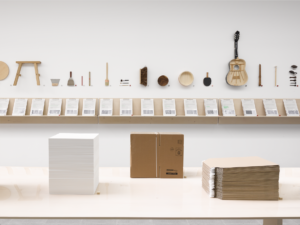
Formafantasma, Cambio, East Gallery, Photo ©George Darrell
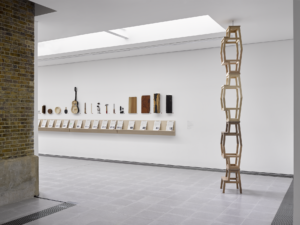
Formafantasma, Cambio, East Gallery, Formafantasma, 2020, Photo ©George Darrell
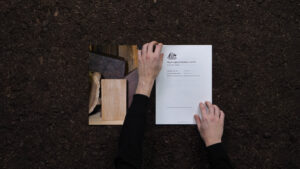
Formafantasma, Cambio, Seeing the Wood for the Trees, 2020
AM: Can you tell me about your role during the research phase? Which observations and conclusions from that phase later became the pillars of Cambio?
SF: We always try to stick to a pragmatic research process, but it ends up never being fully pragmatic, as intuition plays a big part in it. For instance, we realised that the starting point for Cambio weren’t our observations, but rather the concepts that we felt we should work on, develop and include in the exhibition.
AT: As we work very intuitively, we started by looking into the rights of non-human species, and then decided to shift our attention to plants. We spoke with wood evolutionists and scientists, examined the history of the timber industry, and began to gradually piece together the puzzle. Aside from establishing the collaboration, the most crucial part of the process, which also served as the foundation of the research, was naming the exhibition. Of course, Cambio is connected to the idea of change, but it also references a trajectory, in terms of a compelling memory account, a record of the tree’s past. The cambial layer is a membrane that runs around the trunk of trees. It produces wood on the inside, and bark on the outside, allowing the tree to adapt and morph as it grows, thanks to its resilient nature. So, as soon as we named the exhibition, the way we would narrate all the elements within it became clear. It sounds very pragmatic, but the process of reaching clarity is not at all straightforward.
SF: Doing a historical investigation always helps us make decisions. If we understand how things evolved, we realise what we need to include in the exhibition, and where. For instance, the display of samples of rare hardwoods, loaned by the Royal Botanic Gardens at Kew and first shown in 1851 at London’s Great Exhibition, allowed us to track the legal trade of timber in the world, and to discuss colonialism and how it shaped a contemporary “mannerism” of dealing with design.
AM: Understanding where you’ve come from, in order to know where you’re going…
AT: Exactly. And this is a key step in any project we undertake. When we worked on the moulding tradition, we looked into the history of ceramics in Sicily. For Botanica, we retraced the history of plastic. Looking back to look forward is essential to our methodology.
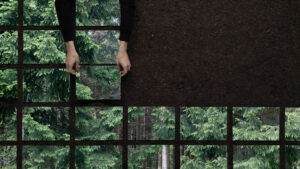
Formafantasma, Cambio, Seeing the Wood for the Trees, 2020
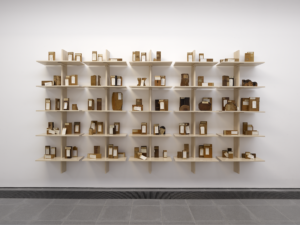
Cambio, Formafantasma, North Gallery, Serpentine, 2020, Photo ©George Darrell
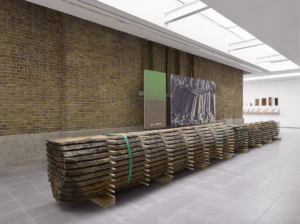
Formafantasma, Cambio, South Gallery, 2020, Photo ©George Darrell
AM: With the Ore Streams exhibition, you explored ways of recycling electronic waste. What was the response to it, and how much space was there for your insights to evolve and be applied further?
AT: Ore Streams was successful in the media and in terms of the response from the public and the designers. However, companies producing electronics never fully engaged in the discussion at the heart of this project. Firms like Samsung or Apple have their departments scattered all over the world: Design in London, Development in America, Production in China, and so forth. And there’s little communication between them, which makes things quite challenging.
SF: In a way, that’s the reason why we intuitively shifted to timber…
AT: Timber is still a global issue, but it’s much more approachable. That said, we were contacted by a lighting manufacturer, and we’ll most likely help them review their production by thinking of strategies to work more ecologically, acting a bit like consultants, while maintaining our role of designers within a large company. Changes like that take time – something that we are so short on. Design and production need to be given enough time to flourish, rather than focusing on speed. Projects should be taken more seriously and evaluated over a longer time frame.
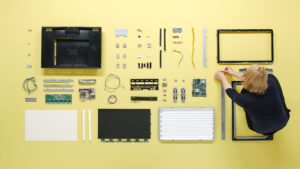
Formafantasma. Taxonomy, Ore Streams, 2017
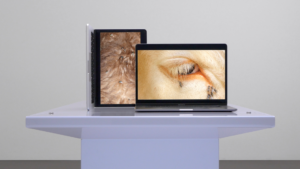
Formafantasma, Visual Essay 1, Ore Streams, 2017
AM: Beyond the educational component of your work, you are also educators by profession. What are the core principles of your Master in Geo-Design at the Design Academy in Eindhoven?
SF: “Geo” refers to geography, but most importantly to the Earth. With Geo-Design we want to understand the implications of design on a much broader scale: that of the planet. Focusing on ecological considerations, we want to question how design can improve people’s lives, and investigate how we can get to that point. So we look at the infrastructures upon which design works and performs: the extraction and distribution of materials, the production processes, the politics of design. And we carefully examine how design behaves within this complex system, how it links to economics, politics and so on. Ideally, we want to come up with tools to understand this complexity, and ideas to address it.
As exhibitions, both Cambio and Ore Streams are examples of projects that have a concrete outcome, but that also produce research, and insights in this complexity, as well as strategies we can apply to it. The outcomes of the Geo-Design Department aren’t necessarily meant to be connected to the media or a way of working. What we want is to open the Department to information designers, product designers, activists, people who want to address the complexity within which design works and performs, always with a focus on the ecological component. We hope that the Department will operate through group research sessions and individual inputs, with research being shared between the participants. If I am researching something, and another person sees a potential in it that I don’t, they should be free to appropriate that, thus making the research available not only to them, myself and the Department, but also to people on the outside.
AT: The structure of the platform we’re developing this year will be fundamental. The Geo-Design Master has an approach similar to that of a science lab, where all scientists upload their research on a platform. It is for the students, as well as for all people interested in the work of the Geo-Design Department.
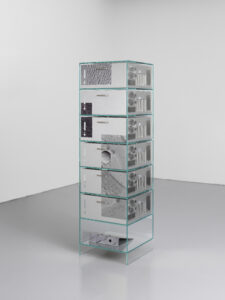
Formafamtasma, Ore Streams, Cabinet, 2017

Formafamtasma, Ore Streams, Cubicle, 2017
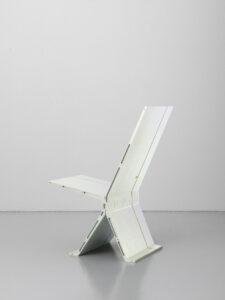
Formafantasma, Ore Streams, Chair, 2017
AM: What do you aim to “pay forward” to your Master students, and how can Geo-Design enrich Formafantasma’s vision of restorative justice across the different fields of design?
SF: I think the Master is more about fostering a community than paying something forward to them. Although naturally we’ll make our mark on the Department, the great opportunity that this education project provides us is to create a community to engage with. A place, not only for the students, but for us too, to discuss issues that are currently left amongst less people than in a studio. The more we work, especially after Cambio, the more we notice students gathering around us, because they feel like they recognise their own ideas in our work. It’s a humbling feeling, and it gives you a sense of responsibility.
AT: We’re trying to find our model. Of course designers have models – think of the great works of Hella Jongerius, or Enzo Mari, for example. But not many designers are doing what we’re doing, which is quite challenging, because the risk of failure is high.
SF: What we are passing onto our students, we’ll find out later on. For now, we’ll use our way of working and our ideas to put together a team that will define and develop cooperatively what design can be next. The Department is an umbrella, a house for people who feel that some things aren’t right, or that they should be re-examined, reconsidered. It might sound vague as an answer, and needless to say, we have specific ambitions, which we touched upon earlier. However, the Geo-Design Department is not about passing down something, but about coming together as a community of like-minded people, and seeing where we can go.
Regarding the second part of the question: our work on a commission, such as the one of Serpentine for Cambio, is defined by a series of compromises. The Department is where radical ideas can be fostered and cultivated, which in our opinion is the role of education. It’s where we can develop ideas that we haven’t had time to work on yet. Recently, we are thinking more about the needs of non-human species, like other animals, bacterias, and plants. It’s not something we had the chance to delve into through our work, because we’ve had to do commercial work, so the Department is where these ideas can be explored.
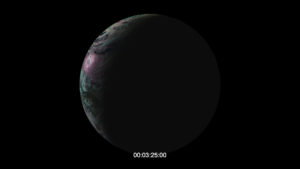
Formafantasma, Geo-Design, Design Academy Eindhoven, The blue marble, Meteosat, 2019
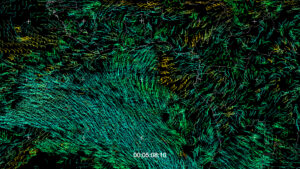
Formafantasma, Geo-Design, Design Academy Eindhoven, Airflows. Meteosat, 2019
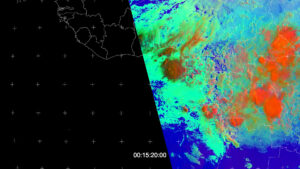
Formafantasma, Geo-Design, Design Academy Eindhoven, Multi-Sensor precipitation estimate. Meteosat, 2019
AM: Neri Oxman describes an evolution “From Nature-Inspired Design to Design-Inspired Nature.” How can design be a form of activism? How can it shape empathy and simulate awareness across scales and applications? What’s the missing or weak link that would prompt a systemic change in how we design the built environment – augmenting, rather than consuming nature?
SF: There are several things; some depend on design, others not at all. A cultural shift is needed, and I think we’re all witnessing it in our way of thinking. Realising that humans are not at the centre of the universe is already something. Covid-19, but also climate change, are reality checks that humanity is coming to terms with. We can no longer ignore that on this planet we are one among many other living species. So, we need to continue this cultural shift, transcend modernity, and acknowledge that our world is inhabited by myriad other species and living things.
AT: We also need to be more alert to our surroundings. I read a beautiful article in the Guardian about how we rely more and more on digital applications, and we lose sight of what’s happening in the world around us. If an asteroid, or solar flares, completely disrupted digital communications, then what? As Simone said, we need to realise that we’re part of a much larger, complex ecosystem.
SF: In the best case scenario, our culture will focus on the idea of ecology, which will shape politics, society, and eventually everything else. We hope that it’ll shape design too, and we are working towards that. The biggest challenge at present is that until this culture permeates everything, designers will tend to receive briefs that reflect shallow ideas, not these urgent needs. We need to remember that designers, a bit like craftsmen, often work on commission. So it’s a problem when commissioners ask designers questions that don’t really challenge them. A similar problem persists within education, across all disciplines and sectors. In our little studio, we try to address that by working on the dissemination of ideas. What we need for this systemic change to happen are constructive challenges that prompt designers in the right direction. Designers are frequently approached as marketing tools, which would be fine if this kind of marketing was channeled in the right direction.
AT: We used to wait for the right commission to come in. It’s only recently, probably because we feel more secure in our ideas, that we started reaching out to companies, pitching them projects. This is new for us: we used to think that if people wanted us, they’d know where to find us, and that if they came to us it was because they understood our work. Nevertheless, recently we began initiating contact, which reflects how much more aware we are of our position and what we can do.
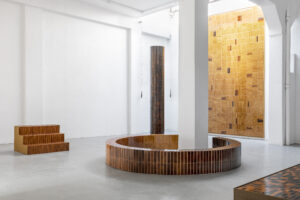
DZEKxFormafantasma, ExCinere, View of the installation, ©Delfino Sisto Legnani and Marco Cappelletti, courtesy of Dzek
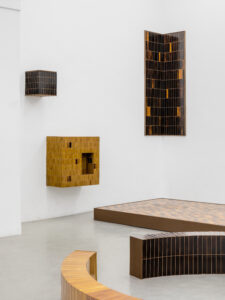
DZEKxFormafantasma, ExCinere, ©Delfino Sisto Legnani and Marco Cappelletti, courtesy of Dzek
AM: True relationships thrive on transparency, the ability to communicate and share oneself authentically, speaking one’s truth, being present and paying attention intellectually and emotionally. In short, it’s about being a good mirror for each other. How receptive and responsive is your audience towards your transparent design attitude? How can designers cultivate human relationships through their work? Where does the art of engaging in a dialogue with an audience lie?
AT: I think one of the limits of our work is that it is not widely available. Although our work involves constant communication, not all of it is easily accessible – especially when it’s channeled through specific galleries, companies or museums. However, we tend to create a conversation around our work, and we make it very accessible through our social media and the website, which we update every time we complete a new project. We do this to involve the audience in the discussion. The people who follow us seem to really appreciate this. We receive emails and messages on a daily basis, thanking us for granting access to a lot of information, insights and ideas. In the past, designers were much more engaged in this kind of discussion. Think of Andrea Branzi, or all the designers of that generation: they wrote a lot, they theorized about design. Few contemporary designers do that.
SF: Our work may be perceived as very personal, but it’s never about us. It’s always about reflecting on things related to design, the world, the way we produce, and how we interact with our environment. We need more designers to think expressively and originally on a formal level, while stepping away from the love of their own taste and engaging with what’s out there, in the world. Relationships will come about naturally if they address with the same intensity the issues which affect not only them, but also others.
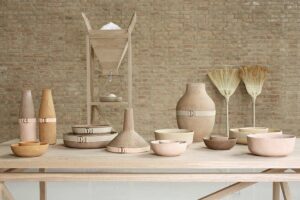
Formafantasma, Autarchy, 2010
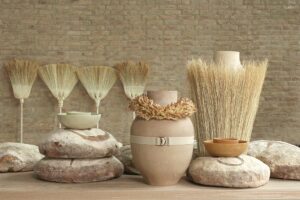
Formafantasma, Autarchy, 2010
.
.
.
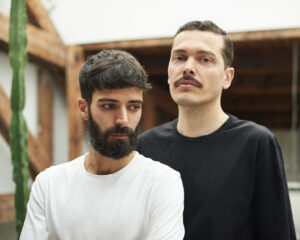
Studio Formafantasma, Photo ©Renee de Groot
Andrea Trimarchi (1983) and Simone Farresin (1980) are Formafantasma, an Italian design duo based in Amsterdam, The Netherlands. Their interest in product design developed on the IM master course at Design Academy Eindhoven, where they graduated in July 2009.
Since then, Formafantasma’s practice has been characterised by experimental material investigations and detailed explorations of the history, context and implications of the transformation of natural resources into commodities. In perceiving their role as a bridge between craft, industry, object and user, they are interested in forging links between their research-based practice and a wider design industry. As a result, works by Formafantasma have been commissioned by a variety of partners including Fendi, Max Mara – Sportmax, Hermès, Droog, Nodus rug, J&L Lobmeyr, Gallery Giustini / Stagetti Roma, Gallery Libby Sellers, Established and Sons, Lexus, Krizia International and Flos.
Whether designing for a client or investigating alternative applications of materials, Formafantasma apply the same rigorous attention to context, process and detail to every project they undertake. The added nuance for the duo is that they do so with an eye to the historical, political and social forces that have shaped their environments.
Their work has been presented and published internationally and museums such as New York’s MoMA, London’s Victoria and Albert, New York’s Metropolitan Museum, the Chicago Art Institute, Paris’s Centre Georges Pompidou, the Textile Museum in Tilburg, the Stedelijk’s-Hertogenbosch, the Stedelijk Museum Amsterdam, MUDAC Lausanne, the Mint Museum of Craft and Design in North Carolina and the MAK Museum in Vienna have all acquired Formafantasma’s designs for their permanent collections.
In March 2011 Paola Antonelli of the Museum of Modern Art in New York and esteemed design critic Alice Rawsthorn listed their studio amongst a handful of practices that would shape the future of design. Andrea and Simone are lecturing and heading workshops in various Universities and Institutions. Currently they are teaching at the ‘Well Being’ and ‘Contextual Design’ Departments of the Design Academy Eindhoven and leading the 2 year Masters programme at the Design Academy Eindhoven, titled ‘GEODESIGN’. Since October 2016, they have been at the head of the Design bachelor at MADE Program in Siracusa, Italy.